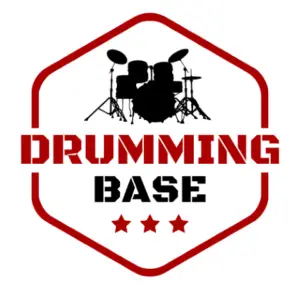There are many different types of cymbals available to drummers to create different sounds. Two of the most frequently compared types of cymbal are the crash cymbal and the splash cymbal. I’ll be comparing these two types directly in this article and answering everything you might be wondering about them.
Splash vs Crash Cymbals
Splash cymbals typically have a diameter of less than 12″ making them smaller than crash cymbals which have a diameter between 14″ and 18″. Crash cymbals are louder and have more sustain compared to splash cymbals which sound brighter and sharper.
Images link to Amazon
Size and Shape
Crash cymbals typically have a diameter of 14″ to 18″. Splash cymbals on the other hand are much smaller and typically have a diameter of 6″ to 12″ but can even be smaller than this.
The lines are blurred when considering cymbals which are between 12″ and 14″ as these can be referred to as either crash or splash cymbals, it just depends on the manufacturer.
In terms of the thickness, crash cymbals are thicker compared to splash cymbals. Splash cymbals are typically very thin which means they can crack more easily.
Looking for more info on cymbal size and how it affects the sound? Check out my cymbal size guide to learn more.
Sound Comparison
Splash cymbals sound quieter and have a higher pitch, faster attack and shorter decay compared to crash cymbals. Hence, splash cymbals sound sharper and brighter compared to crash cymbals which sound fuller.
- Pitch: the larger the cymbal is, the lower the pitch will be. Lower pitches sound warmer and more mellow whereas higher pitches sound brighter and cutting.
- Attack: smaller cymbals have more attack which means the sound is heard more quickly.
- Decay/ Sustain: larger cymbals have more sustain which means the cymbal will ring out for longer.
Here are some YouTube videos where you can hear crash and splash cymbals in action.
Crash Cymbal
Splash Cymbal
What is the Function?
Crash and splash cymbals are both used as accents for example when transitioning from a verse to a chorus (or vice-versa) or during a fill.
Crash cymbals are used when the accent is intended to be dramatic, whereas splash cymbals can be used for a more subtle accent.
Most drum kits will have at least one crash cymbal as these are considered an integral part of the kit for most styles of music, however splash cymbals are rarer. Some drummers like to have a splash cymbal to give them more types of accents, however they are typically only used by more advanced players.
Cymbal Position
If there is only one crash cymbal, it is usually placed on the left, but if there are two crash cymbals then they can be placed on either side above the ride cymbal.
Splash cymbals are typically placed to the left of the ride cymbal so are located more centrally in comparison to the crash cymbal.

Where Should You Strike?
Since crash cymbals are fairly large it is possible to hit them closer to the bell (center) or the edge, however to get the crash effect they should be hit close to the edge.
Splash cymbals are very small so they will always be hit on the edge and do not sound good at all if they are hit closer to the bell.
Price
Crash cymbals range from $50-$500, however on average a good quality crash cymbal will cost at least $200 on average. Splash cymbals on the other hand are cheaper due to their smaller size and typically range from $30-$200 with most good ones costing at least $50.
Here are some more articles you might find useful:


